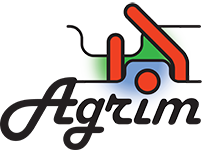Technologies

IC'S
Technology
After graduating, Frank started working as a research assistant at Philips's Nat.Lab, using a box of bare silicon wafers and a flowchart to build a series of ICs. Figuring out everything yourself and operating all the equipment yourself was a valuable learning experience! This learning experience, and the lesson in the importance of seeing things for yourself, remains invaluable in managing thin-film-related projects.
Equipment
Modern IC equipment is very complex in terms of mechanics, electrical, optical, and software. Agrim has gained experience with such machines at various locations at NXP, Philips, and ASML. He also learned the physical principles at the Nat.Lab, which often proves to be the foundation for problems!
Design
Although he has no design or design experience, Frank has repeatedly led design teams in the development of new products or modifications to existing ones. Agrim understands better than anyone that a strong partnership between design and technology results in winning products! Good designers aren't "nerds," but rather strong communicators who optimally simulate and combine all requirements and constraints.
Testing
Without testing, there's no good product, and no quality! As a department head, Frank has managed various test groups and understands the ongoing struggle to achieve the best test coverage at the lowest cost. Insight into both equipment and products is essential.
RF
All the challenges in Technology, Design, and Testing are even worse—that sums up the RF field perfectly. At JDS Uniphase (2.5 and 10 GHz modulating lasers) and NXP (including RF tags and GPS/WLAN applications), Frank gained extensive experience in the field of RF, with his own specific problems and characterizations.
Asics en Mems
Integrating (ASIC) ICs with MEMs is a specialized field. During his assignment for Philips Innovation Services, Frank coordinated with an external IC supplier, after which MEM sensors were applied to the IC wafers, thereby gaining valuable experience in properly managing all interfaces.
Displays
At Flat Panel Display, a joint venture between Philips and others, Frank gained extensive knowledge of LCD screen production, technologies, and products. As head of the Vertical Engineering department, he was responsible for the Process, Product, and Test Engineering groups. He also coordinated the integrated approach to yield improvement, which involved increasing the yield from initial<2% werd verhoogd naar > 70%. Initially, this was achieved by solving fundamental problems, later by reducing defects, making the design impervious to defects, and implementing smart repair strategies.
Frank was also involved in process transfer from Japan and was responsible for the integrated introduction of new products. He led several projects in this area, including those for demanding automotive clients.
Later he used and expanded his experience during his Interim Engineering Manager period at Biometrix, which used electronics-on-glass technology for making large X-ray sensor plates.
Sensors

X-RAY SENSORS
In 2009, Frank, as Interim Engineering Manager, led the volume ramp-up of a new technology for X-ray sensor plates on a project for Philips Medical Systems / Biometrix. His experience in process and product development, combined with his knowledge of comparable LCD technology, ensured a flying start and impressive results. In one year, the yield increased from<10% naar > 50% and customer satisfaction increased from a score of 4 to 9!
Furthermore, useful experience was gained with FDA requirements for medical devices for which an advanced Control Plan was developed.

PRESSURE SENSORS
In 2015, Frank led a project for Philips Innovation Systems to industrialize a pressure sensor based on a capacitive MEM device integrated on an ASIC. This ultra-small pressure sensor is used for medical applications.
Electronics
Frank was hired in 1998 by Philips Opto-Electronics, which was soon after acquired by Uniphase, later JDS Uniphase. Initially, he was Engineering Manager for all engineering activities from solid-state laser crystals to laser modules. Later, he led the engineering and production activities for JDS Uniphase's most advanced lasers, the 2.5 and 10 GB modulated lasers.
Activities included assembly process optimization in the areas of optics, electronics, mechanical stability and hermeticity, testing and characterization, and the implementation of Lean Manufacturing methodologies and SPC.
Solar cells
During an interim assignment in 2010 for Solland Solar, located on the border between Heerlen and Aachen, Frank gained extensive experience in the production and optimization of solar cells. The efficiency of energy conversion is a key parameter. Frank coordinated three process optimizations:
- Selective Emitter: By applying the high doping only to the metal contact surfaces, the doping of the emitter could be kept lower, with less recombination losses
- Advanced Metallization: By printing metal connections thinner, the shadow effect of these connections was greatly reduced.
- Rear Side Passivation: By applying Al2O3 to the rear of the cells, recombination was greatly reduced.
MEM'S Medical Devices

Frank's experience in MEMs lies primarily in the development of devices for a brain stimulation probe, commissioned by a Philips spin-out. The devices were manufactured under ISO 13485 conditions at MiPlaza on the High Tech Campus and used for clinical trials. As Interim Senior Project Leader in 2012 and 2013, Frank was responsible for both the MEM device development and the development of an assembly process for the complete probes.

Frank is currently back in the MEM field: He's leading a project at Philips Innovation Services for the industrialization of a micro pressure sensor for medical applications. This involves integrating a sensor onto an ASIC.
In addition, Frank has provided support in the manufacturing of advanced micro-mirror devices and has had contact with MEM factories in France, Italy and Sweden.






